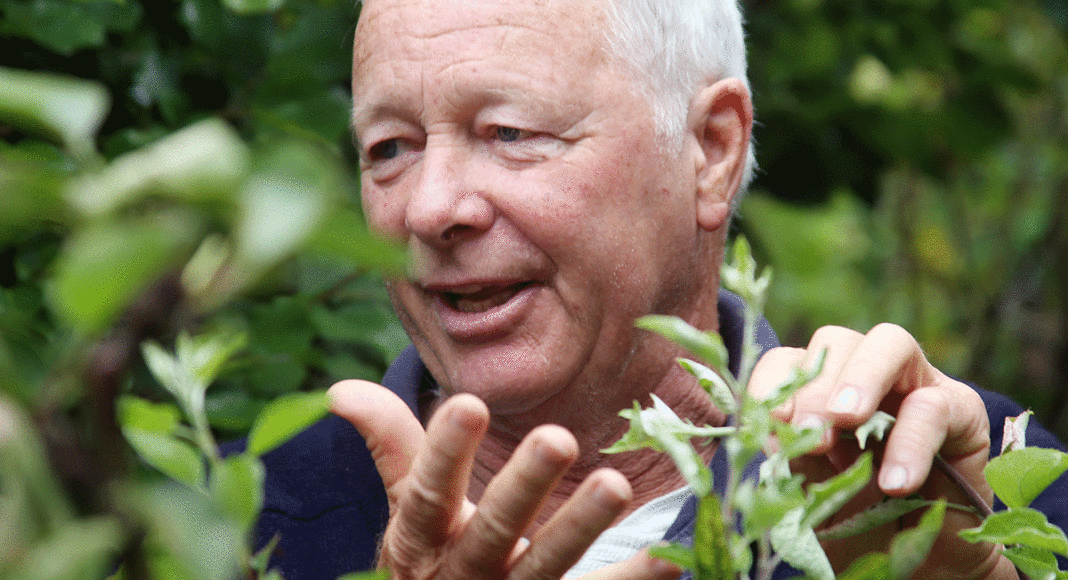Poet and shaman of the orchard Orin Martin has now given us the ultimate guide to growing fruit trees organically: Fruit Trees for Every Garden. With a foreword by Alice Waters and the firm, encouraging voice of the keeper of UCSC’s Alan Chadwick Garden energizing each page, the well-illustrated book is accessible and definitive.
Every home gardener considers fruit trees to be the ultimate challenge. Martin knows this, and he long ago mastered the art of tending many varieties of heirloom fruit in orchards that have inspired countless apprentice gardeners, as well as artists such as his wife Stephanie Zeiler Martin, whose exquisite color etchings adorn the new book. With daughter and publishing colleague Manjula Martin, Orin shares his secrets in fresh, uncluttered language. Available now, the book is a horticultural gem—a true heirloom.
The title contains the tantalizing implication that we, too, could learn to grow organic orchards.
ORIN MARTIN: In essence this book is for all, the novice through the skilled, experienced tree grower. Call it a roadmap, a how-to manual—but much more than just that. It’s about the hows and whys of tree-fruit growing. It seems people’s first impulse is to grab a tree, grab a spade, dig a hole, and stick the tree in the ground. Don’t be that person! Many mistakes with fruit trees are made as a result of inadequate or poor planning, and once the tree is in the ground, it’s hard to reverse engineer yourself out of trouble. This book aims to help in that regard—planting a fruit tree should be a considered act.
After so many years of doing and teaching, was it easy to put together accessible tips and principles of organic gardening?
Over more than 42 years, I’ve probably taught 1,500 apprentices—1,500 UCSC undergrad intern and 1,500 public workshop participants. In apprenticeship-style teaching, we learn by doing, by working alongside others who know more, learning in a granular fashion, incrementally, until competency is achieved, and then we work independently. It was startlingly easy to transpose both the style and substance of oral presentations into the format of this book. My life’s goal has been simply to fully understand a topic and then offer translation services to others.
What has been your greatest success as a fruit grower?
I regard fruit growing as a long conversation with trees. It’s a bit of a dialectic, too. I am largely self taught. I never really went to school much. There was no one there to show me the way, and so I had to figure it out myself. And in a slow, methodical, sometimes painstaking manner, I did. This has been a pleasurable journey, but not one without its setbacks. This book aims to make the learning process easier and more rapid for others.
In making this book what are you especially pleased with?
What I am most pleased with is the length and detail and the associated graphics in the pruning and training chapter. This chapter explains tree physiology and lays down a good foundation. When growing a tree, you will undoubtedly spend more time pruning and training your trees than any single activity. Studies have shown that trees in the everyday landscape have a calming effect on people, yet the average backyard gardener may feel anxious, confused, even defeated by the seemingly daunting task of pruning. Fear not—the book will help!
And working with your daughter and wife as collaborators?
Let me proudly state that without the help of my oldest daughter Manjula, writer and managing editor of Zoetrope literary magazine, there would be no book! The evocative copperplate etchings and the illustrations in this book were done by my darling companion and wife of 35 years, Stephanie Zeiler Martin.













